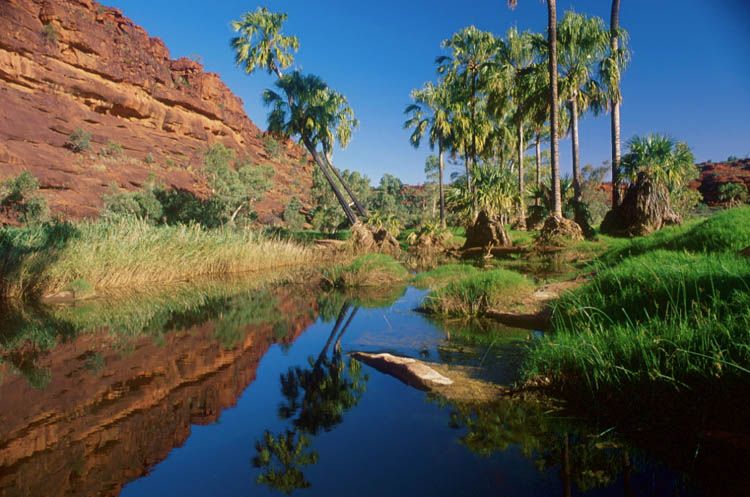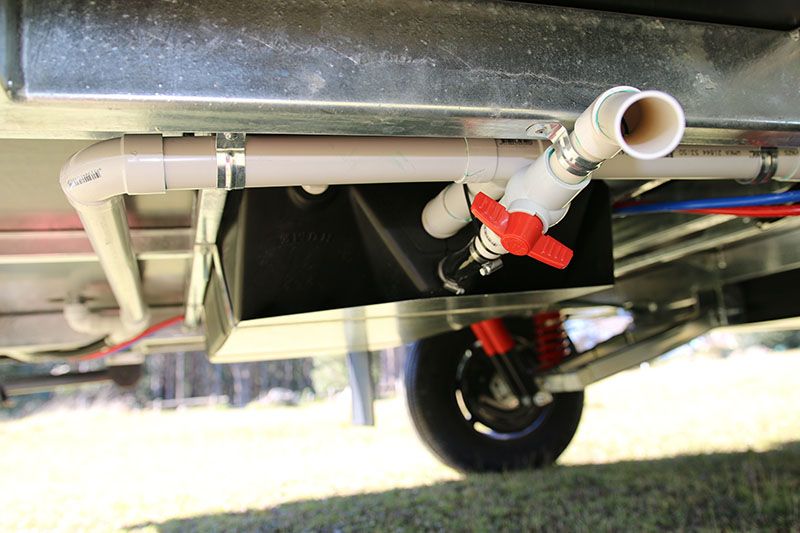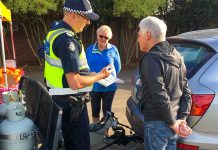Water is, without question, the one resource we can’t do without. When caravanning, the ability to carry the appropriate amount of water is therefore particularly important.
It’s a balancing act. Caravans have a limited payload capacity, typically 300kg for a single-axle van and 400kg for a tandem-axle van. These figures, however, are becoming outmoded. More and more caravan manufacturers are seeing the wisdom of certifying their caravans (and accordingly fitting them with the appropriate hardware, such as properly rated axles) with a greater payload capacity.
The thinking here is obvious. Water weighs 1kg per litre. Two 90L water tanks filled to the brim on a typical tandem-axle van will leave a 220kg weight allowance for items such as clothing and food, and don’t forget about the weight of the gas in the cylinder(s).
The point is, when assessing the amount of water to cart along, it needs to be balanced against a range of factors.
[If you like this article, Like Go RV on Facebook!]
Ask yourself, will there be water at my destination? If so, perhaps you don’t need to fill both water tanks, and could therefore save some fuel. After all, the weight reduction will allow your tow vehicle’s engine to take it a little easier.
If you’re heading into remote areas, it would be wise to store as much water as possible, within the confines of your caravan’s load carrying capacity as well as the Gross Vehicle Mass and Gross Combined Mass (GCM) of your tow vehicle.
Many caravans, particularly offroaders, can simply draw water from a creek or similar. It’s just a matter of running a hose to the water source, flicking a switch, and letting a pump do the rest. Naturally, this water is pumped into an isolated tank and used for purposes such as washing dishes, rather than being mixed with the drinking water supply. The benefit, of course, is that precious drinking water isn’t wasted on mundane activities.
GREY WATER TANK
Australian caravans are beginning to catch up with Aussie motorhomes in the grey water department. It’s the offroad brigade that’s leading the charge, unsurprisingly, with the likes of Sunseeker and Trakmaster offering a grey water tank in equivalent capacity to the fresh water tank. So, if the van is fitted with 100L of fresh water, the grey water tank would usually (but not always) be 100L too.
Even little rigs, such as the compact offroad Karakampa, are being fitted with grey water tanks, either as standard or as an option.
While having a grey water tank on a caravan is a fantastic idea, there are a couple of points to keep in mind. First, it might not be wise to have one retrofitted to your caravan, unless you have the payload capacity to match. Imagine carrying 100L of fresh water to your destination, and then ‘harvesting’ that 100L in your grey water tank. All well and good. But before setting off, you fill your fresh water tank while, for whatever reason, being unable to dump the grey water. The result: your van is carrying twice the amount of water than it was originally built for.
COLLECTING WATER
A number of manufacturers, such as Sunland and Trakka Motorhomes, have inbuilt rainwater harvesting systems. Essentially, the systems involve a ‘gutter’ moulded into the roofline that feeds into a dedicated water tank. This is a great idea that really should be adopted by all caravan manufacturers.
Lowering one end of the caravan awning and catching the run-off in a bucket is a popular method, too, but let’s face it: in a downpour, the bucket will fill so quickly that you’ll soon find yourself with more water than you can manage! Here’s a tip: to keep your campsite as dry as possible during torrential weather, rig up an impromptu plumbing pit by fitting a sullage hose or similar to about 50mm from the bottom a bucket. Seal it up, position the bucket underneath the lowest corner of the awning, and run the hose away from your campsite. Voila! An instant campsite drainage system.
COMMON SENSE
Ultimately, determining the correct amount of water to carry when caravanning is a common sense matter. Carry as much as legally possible and practically feasible if heading remote, and have a good think about what you really need if not. Do you really need to have that 2m length of 100mm PVC pipe on the 4WD’s roof rack filled with water? Sure, it’s a nifty idea, but what’s that extra 20kg doing to your fuel consumption?








Catch rainwater in a bucket?
Insert a hose to within 50 mm of the bottom?
Result: As the bucket reaches full a siphon will commence.
You will wake up with 50 mm of water in the bucket. Doh!
Why are we so concerned with grey water when a lot of parks in arid areas and some that don’t get a lot of rain encourage you to run the water from your shower and sink onto there garden trees ect only time one needs to collect grey water is when you are parked on hard surfaces no tree or gardens nearby. When that occasion arrives whats wrong with a portable unit like 20 litre can with screw top.
Totally agree with you Tony. My more detailed comment is awaiting moderation by the website but could not agree with you more. As you will see by my comments I am heavily involved within the RV industry & am disgusted with the push by the CMCAA & local councils around Australia in regards to grey water tanks in caravans. It is just a massive money grab by the spare parts industry & the PC police. Keep up the good comments.
Grey water still contains material from the aforementioned source.
IE to dispose of the waste water on site could cause a problem in that the waste will attract vermin/flies etc.
As a result it could cause infection the other campers.
I work in the RV industry, have caravanned since the age of 5 with my parents & have now tow my own van for the past 12 years for nearly 80,000km. The push, (by the CMCAA & local councils it appears), to have ALL caravans fitted with grey water tanks whether it be by the manufacturer when new or retro fitted to older vans is extremely concerning. Look at this way, as you use water from the freshwater tanks (normally fitted nearest as possible to the axle/s for stability reasons) the grey water & its resultant 1kg/1ltr is then deposited well to the rear of the axle group. The result, until emptying the grey water tank, is the massive potential of fishtailing at 95 – 100km/h. Just ask any B double truckie what that’s like.
Any natural ball weight loss which could have occurred from normal day to day freshwater use has now been magnified greatly with that grey water weight being well behind the axle group. What motorhome groups pushing for the installation of grey water tanks on caravans don’t understand is the configuration of a caravan rig is totally different to a motorhome. Tanks on a motorhome is safely slung BETWEEN the axles & they don’t have the flexing fulcrum point at a tow ball. If you think those videos of swaying caravan rigs shown on the 7pm current affair shows is scary, wait until we have an army of grey water tank fitted caravans on the road.
Having spoken to several national park rangers re grey water disposal the answer given was trees need water to survive and that they had no problem with emptying my grey water tote around the forest
Grey water carries human pathogens which can be harmful to native wildlife
National Parks would prefer you to take out your grey water with you rubbish
Look on the web you can buy 40 liter portable grey water tanks quite reasonably $50/$60 they work well connect easily have wheels you can empty them in any dump point.Having one I find it is very easy to use.Give it a go.
.
Ok , Im A caravaner for 40 odd years , we have watered trees , gardens ,lawns , for all that time , recently we obtained a portable grey water container , we to date used it ONCE at childers QLD , behind the RSL . In the AM having finished all the Bits , I watered the grass , flushing the last out in the dump point , easy ; No nasties on the environment , trees / grass were watered . EMPTY CONTAINER STORED WITH NO WEIGHT DRAMA , Common-sense people .. and a bit of exercise .
I have never had a caravan before, so I wasn’t sure what maintenance I would have to do on it while camping. It is nice to know that there is a grey water tank on the caravans. It would be good to prepare before buying my caravan to know where I can dump the grey water.